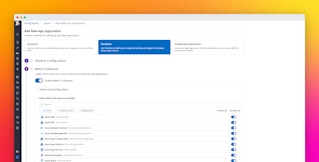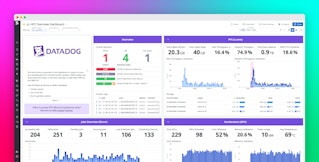
Steve Harrington
Migrating your applications from on-prem infrastructure to the cloud comes with a number of benefits, including increased agility, resilience, and scalability, as well as potential cost and IT overhead reductions. But it can be complex, which is why organizations moving to Azure often use Microsoft’s Cloud Adoption Framework for Azure and its strategy for successful migrations. But even with the right strategy, incidents can occur, especially if you lack continuous visibility into the health, performance, and makeup of your environment.
Datadog is pleased to partner with Microsoft through the Cloud Adoption Framework for Azure to help organizations plan, monitor, and accelerate their cloud migrations. By incorporating Datadog’s observability and security platform, organizations can better monitor each step during their migration to Azure, enabling them to shift and scale their workloads faster and with more confidence.
Migrate confidently with the Microsoft Cloud Adoption Framework for Azure + Datadog
Whether your migration is a more straightforward lift-and-shift or a full architectural redesign, it’s vital to limit potential downtime or disruptions. Microsoft’s Cloud Adoption Framework for Azure helps ensure a successful migration by providing a set of detailed guidelines, best practices, and tools for the key phases of a cloud migration. These phases start with the creation of an adoption strategy and plan. Then, CAF recommends ensuring your environment is ready to move to the cloud. Finally, you can safely migrate your workloads. In this way, the CAF provides a migration route that helps maintain service continuity for your users.
Datadog provides critical visibility into your environment across the full CAF-driven migration process. In this post, we’ll look at how you can use Datadog to support the planning and execution of your migration. In the planning stage, you can integrate Datadog with your Azure environment and prepare dashboards and alerts for your teams to efficiently execute their workload migrations. Then, in the migrating stage, you can use Datadog to measure the health of both your legacy environments and new landing zones as your teams launch workloads in Azure. By configuring Datadog to monitor both your existing environment and your Azure landing zones, you will be able to measure the health of your applications throughout the migration. For full details and best practices for implementation, see our Microsoft Cloud Adoption Framework with Datadog guide.
Understand your service dependencies
When you’re building a migration strategy and plan, it’s important to know the service dependencies tied to your applications so that you can move these applications over without causing disruptions. Datadog’s Service Map automatically visualizes your application architecture so that you can see which services communicate with each other, which need to be migrated together, and which can be shifted more readily without any dependency constraints.
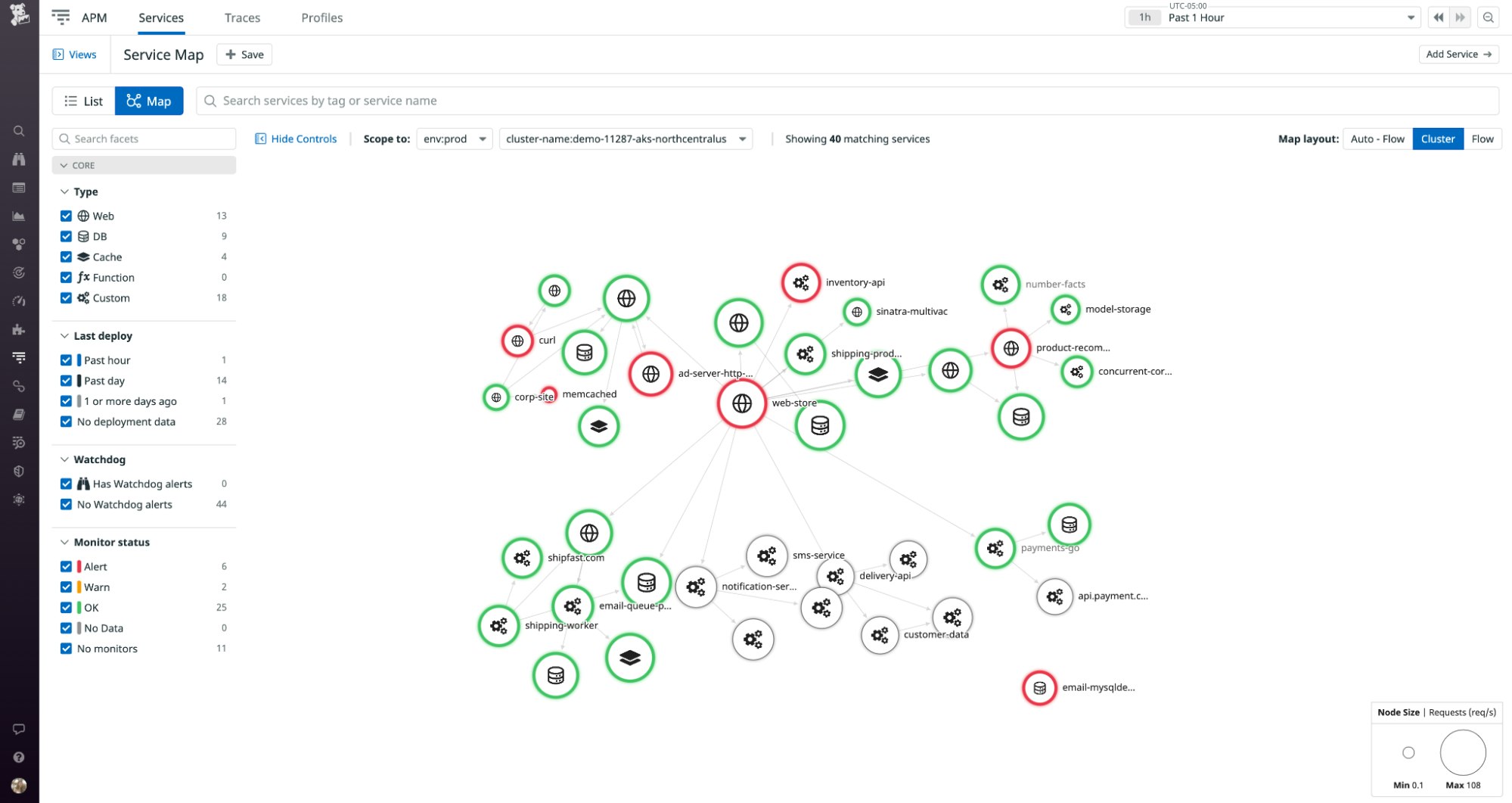
Visualize infrastructure metrics across all environments
As you shift workloads to cloud-hosted infrastructure, quickly locating usage issues like resource saturation on newly provisioned VMs can help you make adjustments to the new environment as needed. Datadog’s Host Map helps you perform this task by giving you a high-level visualization of all of your servers, whether on-prem or cloud-hosted. The always-on visibility provided by the Host Map enables you to continuously monitor resource usage as you move workloads to Azure-hosted infrastructure and easily identify, for example, undersized VMs.
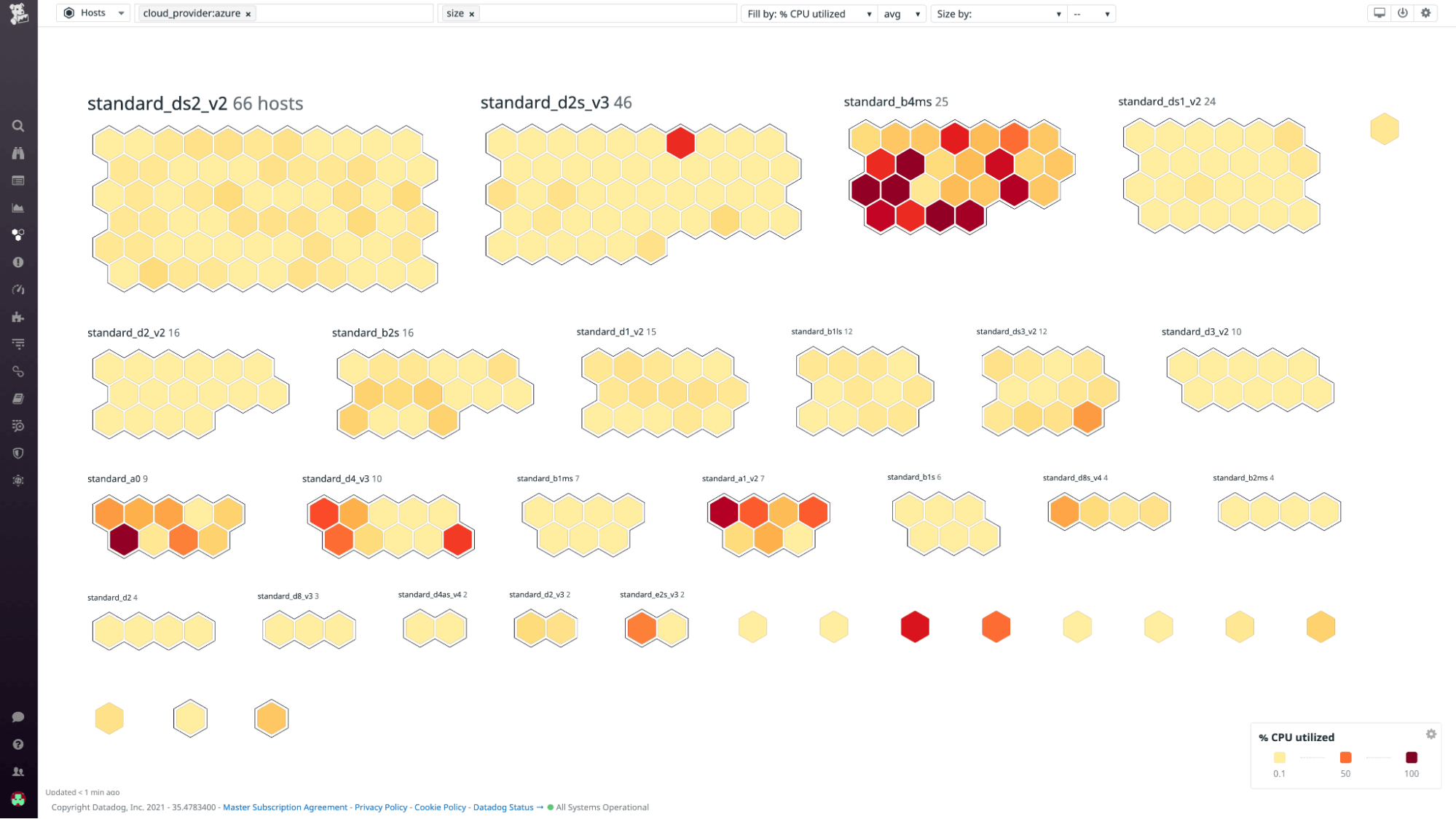
Datadog integrates with the full suite of Azure services, meaning that you can monitor each layer of your cloud stack. Using a dedicated batch API, Datadog can collect the complete range of Azure Monitor metrics at scale and with the lowest metric latency in the industry. Datadog also generates more than 40 additional enhanced metrics and tags from dozens of different Azure APIs to provide insights that are not available from Azure Monitor. These insights include information that is vital for monitoring a migration, such as the number of VMs served by each of your load balancers. Other generated data includes metrics that track whether you are approaching resource usage limits or quotas, which could cause issues as you continue to move workloads over. Datadog’s out-of-the-box dashboards and turnkey visualizations mean that you can immediately get visibility into your Azure resources.
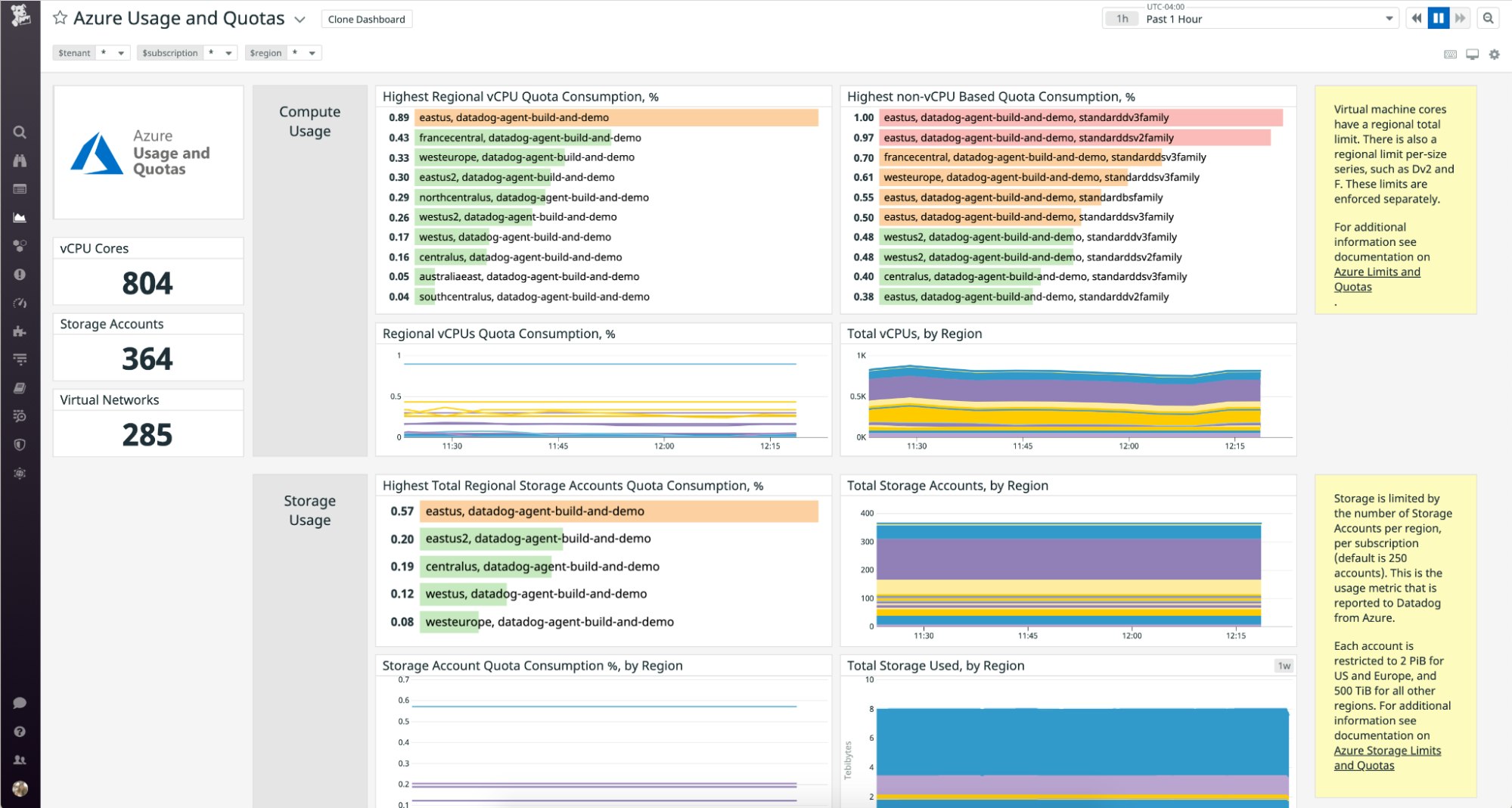
Monitor end-to-end performance of your migrated applications
It’s important to continuously monitor the availability and performance of your applications both during and after a migration. For example, Datadog Synthetic Monitoring lets you automatically test your service endpoints to verify that they are available as you shift traffic over to your cloud-hosted infrastructure.
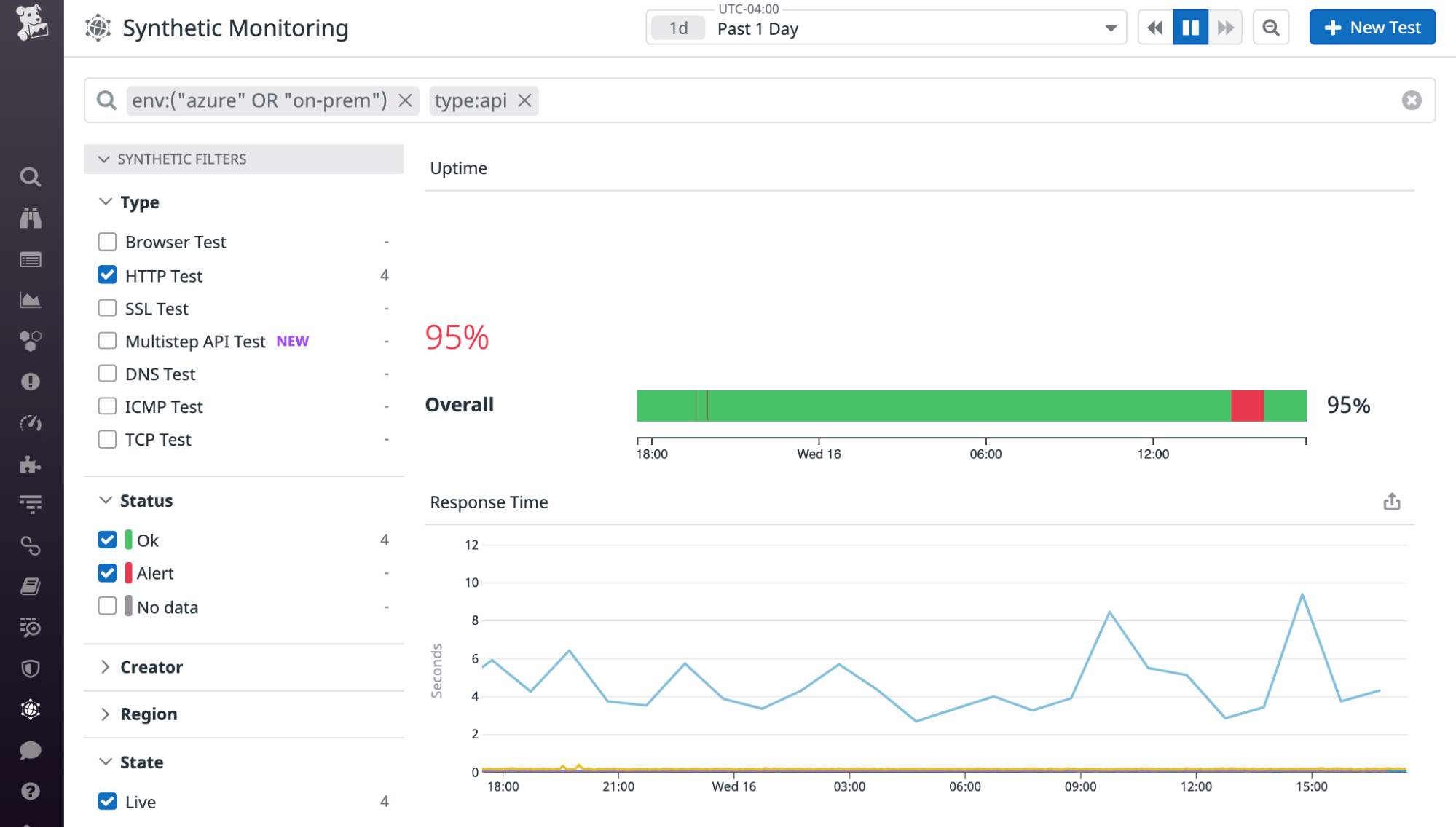
Another powerful feature is Real User Monitoring (RUM), which lets you watch for increased latency or error rates on your frontend as you deploy new versions of your application. You can also easily correlate your RUM data with Datadog APM to identify if an issue is the result of a backend problem, such as resource saturation on an underlying VM.
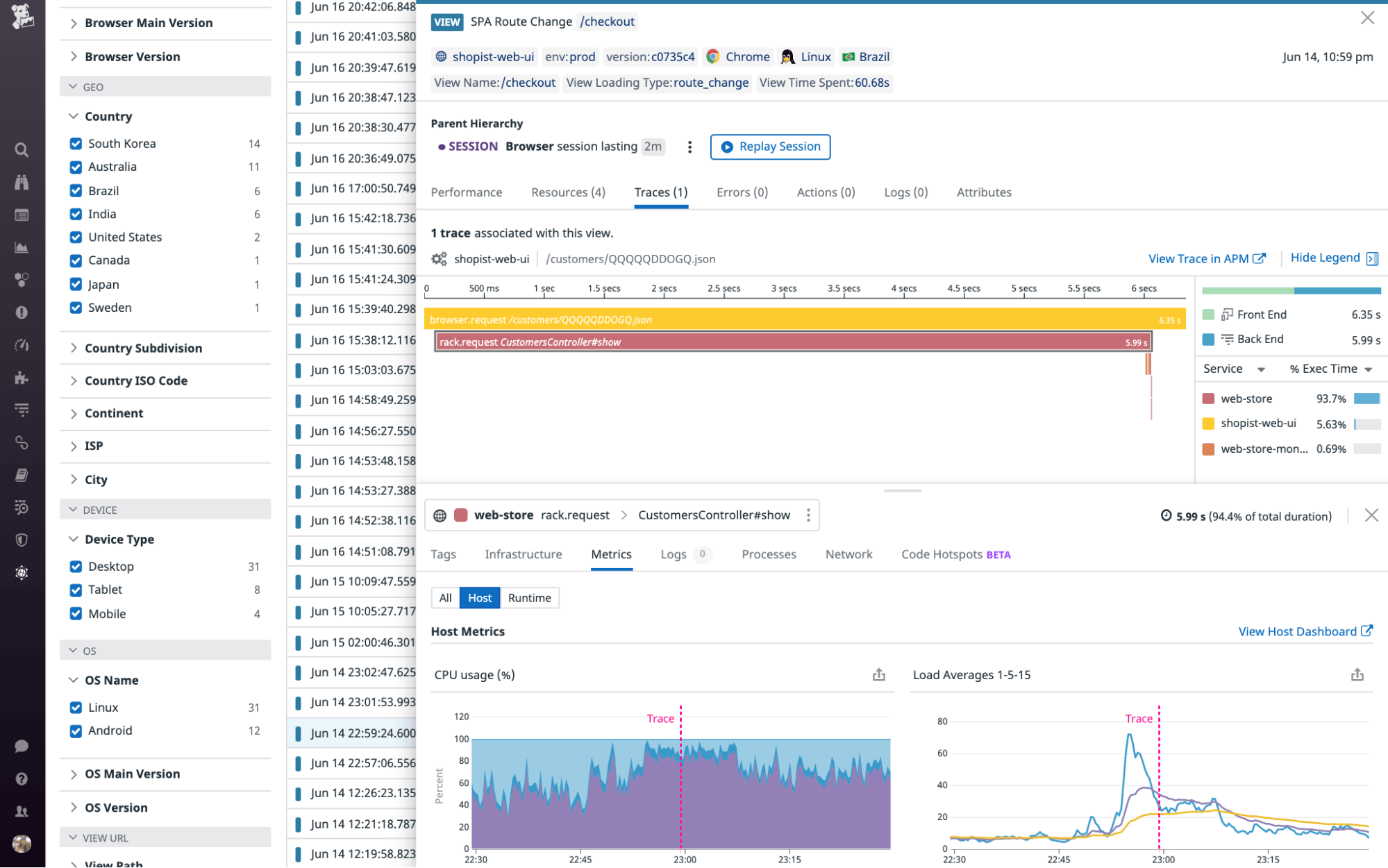
In addition to monitoring traffic as you shift it to your new cloud-hosted endpoints, it’s also important to understand how your apps are running on any new architectural patterns. For example, many organizations may choose to replatform some applications to utilize Azure App Service, Azure’s popular managed compute platform for web applications and event-driven functions. Moving apps to this new platform delivers substantial benefits, but it can also present an additional observability challenge. Datadog’s simple point-and-click APM instrumentation uses the App Service extension and dedicated Azure Serverless view to provide immediate insight into your App Service’s health and performance and identify problem spots right away.
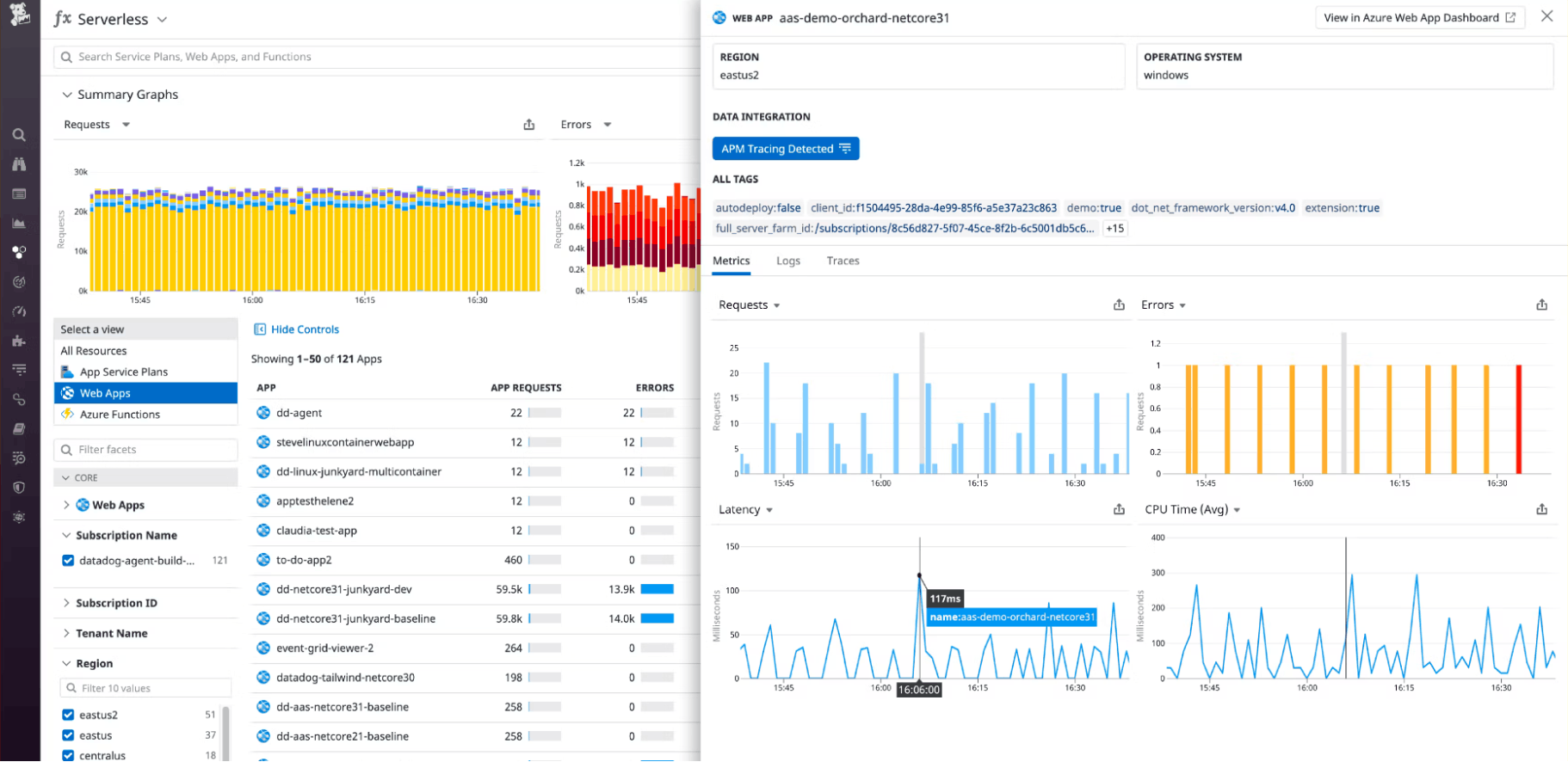
Get started monitoring your Azure cloud migration with Datadog
The Microsoft Cloud Adoption Framework for Azure provides organizations with a clear roadmap for migrating their applications to the cloud. Datadog is proud to partner with Microsoft so that customers have deep visibility across each layer of their on-prem and Azure cloud infrastructures, helping teams more confidently move their workloads to the cloud. See our documentation for more information on getting started today. If you’re not a Datadog customer, you can sign up for a free 14-day trial.


